A new retron-powered gene-editing tool could unlock universal cures for genetic diseases.
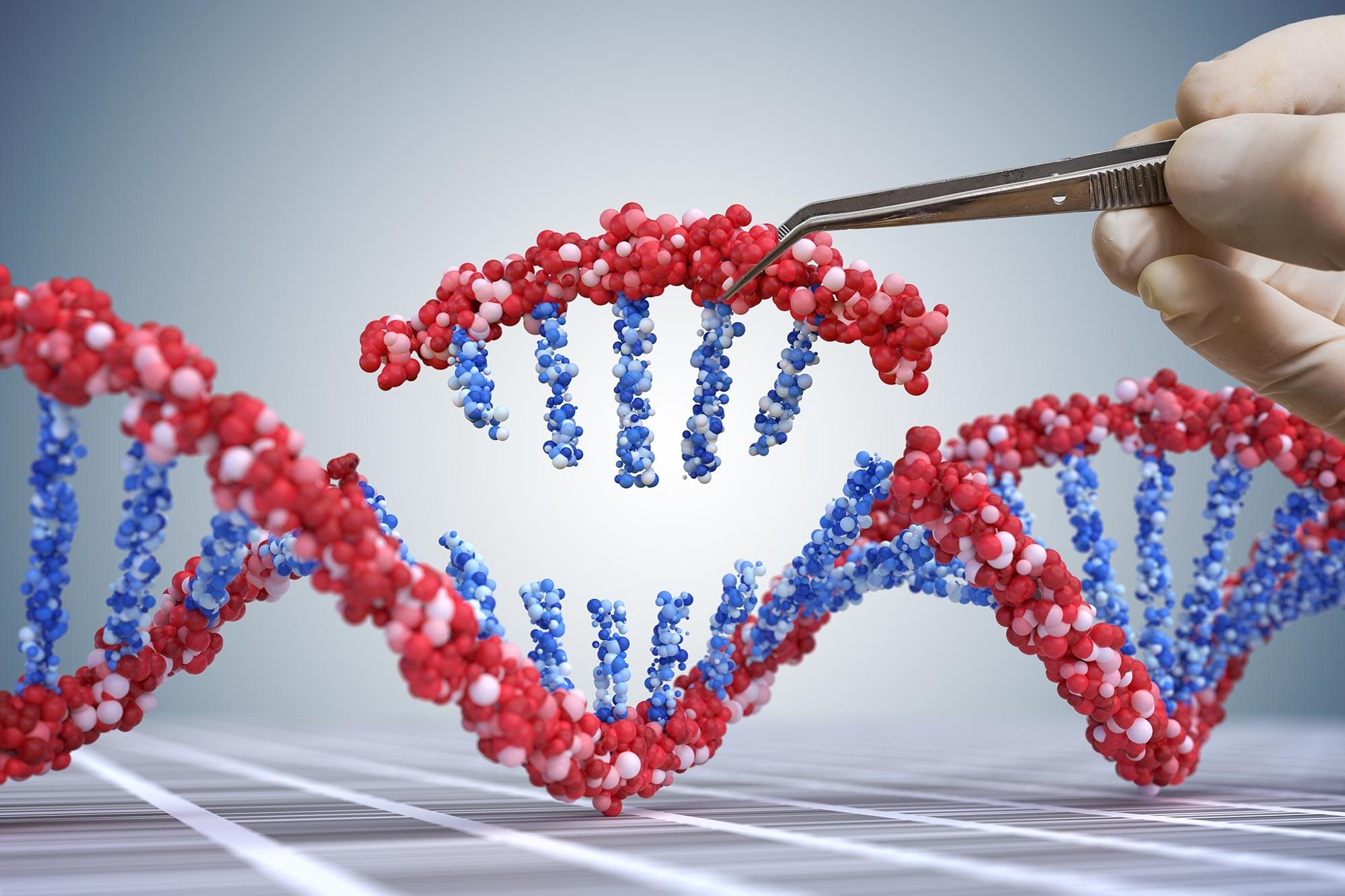

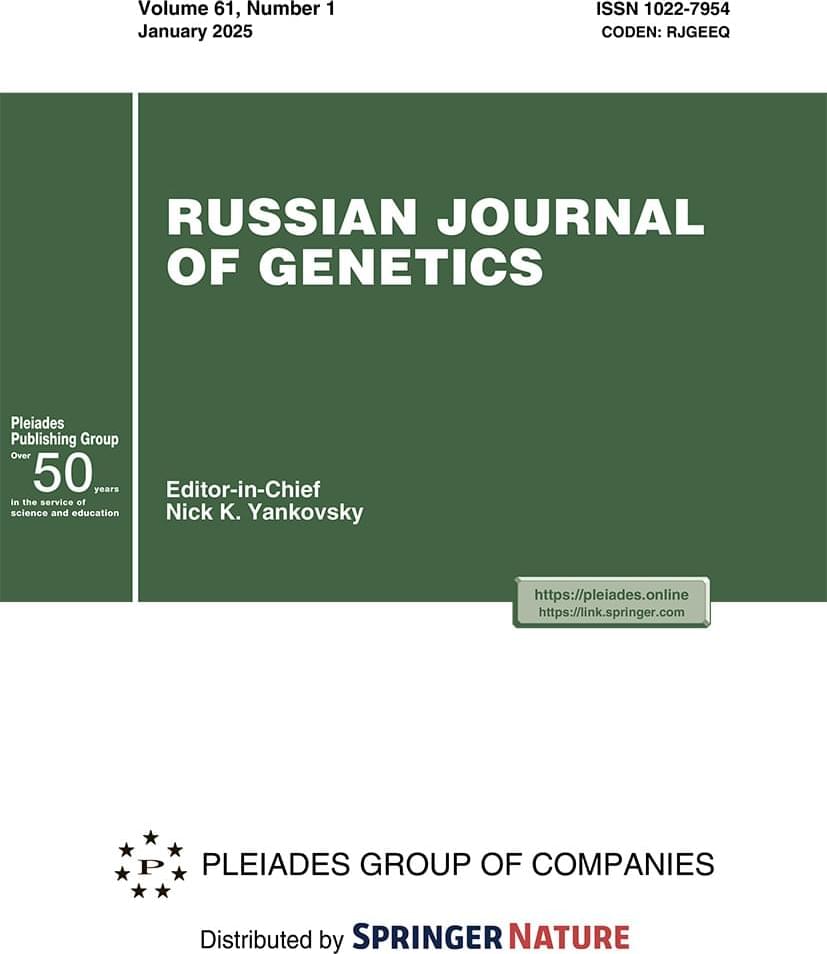
Abstract The review examines modern advances in the genetics of aging and life span. The key molecular mechanisms regulating aging processes at the genetic level are analyzed, including signaling pathways and longevity genes identified in studies on model organisms and through genome analysis of long-lived species. Special attention is given to the insulin/IGF-1 signaling pathway, the role of the FOXO transcription factor, DNA repair systems, epigenetic regulation, and modulation of mTOR and AMPK kinase activity. Results of experimental studies on increasing the life span of model organisms through genetic manipulations and combined approaches are presented.
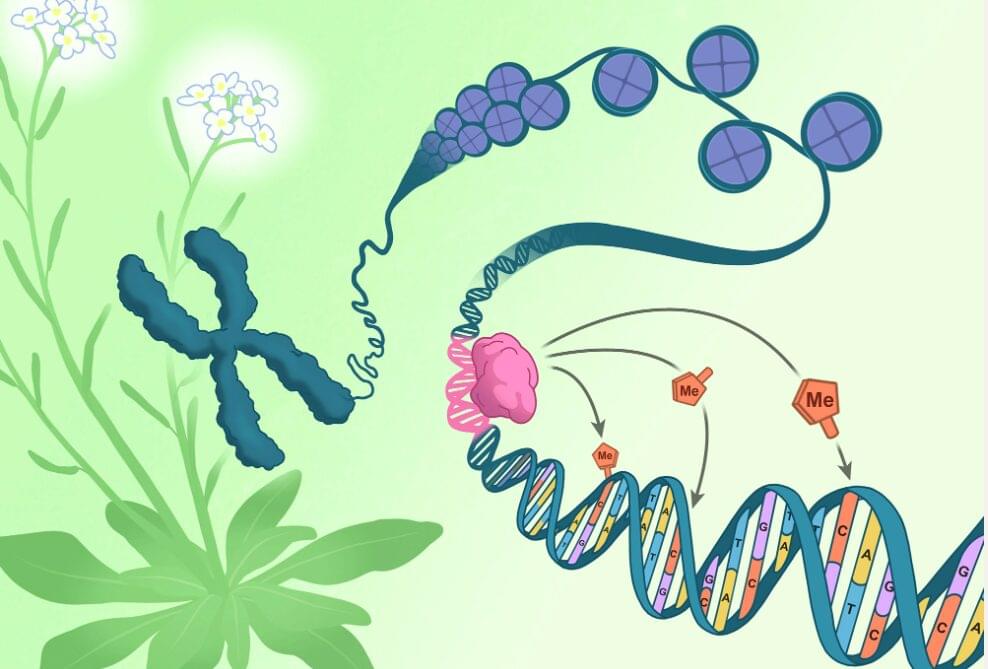
A chromosome pulled from the flowers of Arabidopsis thaliana (green and white) unspools to reveal DNA (blue) coiled around packaging-proteins called histones (purple). The direction of epigenetic changes by genetic features begins as the RIM transcription factor (pink) docks on a corresponding DNA sequence (pink). Once docked, the RIM transcription factor directs methylation machinery to tack methyl groups (orange) onto specific nearby cytosines (orange). Click here for a high-resolution image. Credit: Salk Institute.
All the cells in an organism have the exact same genetic sequence. What differs across cell types is their epigenetics—meticulously placed chemical tags that influence which genes are expressed in each cell. Mistakes or failures in epigenetic regulation can lead to severe developmental defects in plants and animals alike. This creates a puzzling question: If epigenetic changes regulate our genetics, what is regulating them?
Scientists at the Salk Institute have now used plant cells to discover that a type of epigenetic tag, called DNA methylation, can be regulated by genetic mechanisms. This new mode of plant DNA methylation targeting uses specific DNA sequences to tell the methylation machinery where to dock. Prior to this study, scientists had understood only how DNA methylation was regulated by other epigenetic features, so the discovery that genetic features can also guide DNA methylation patterns is a major paradigm shift.
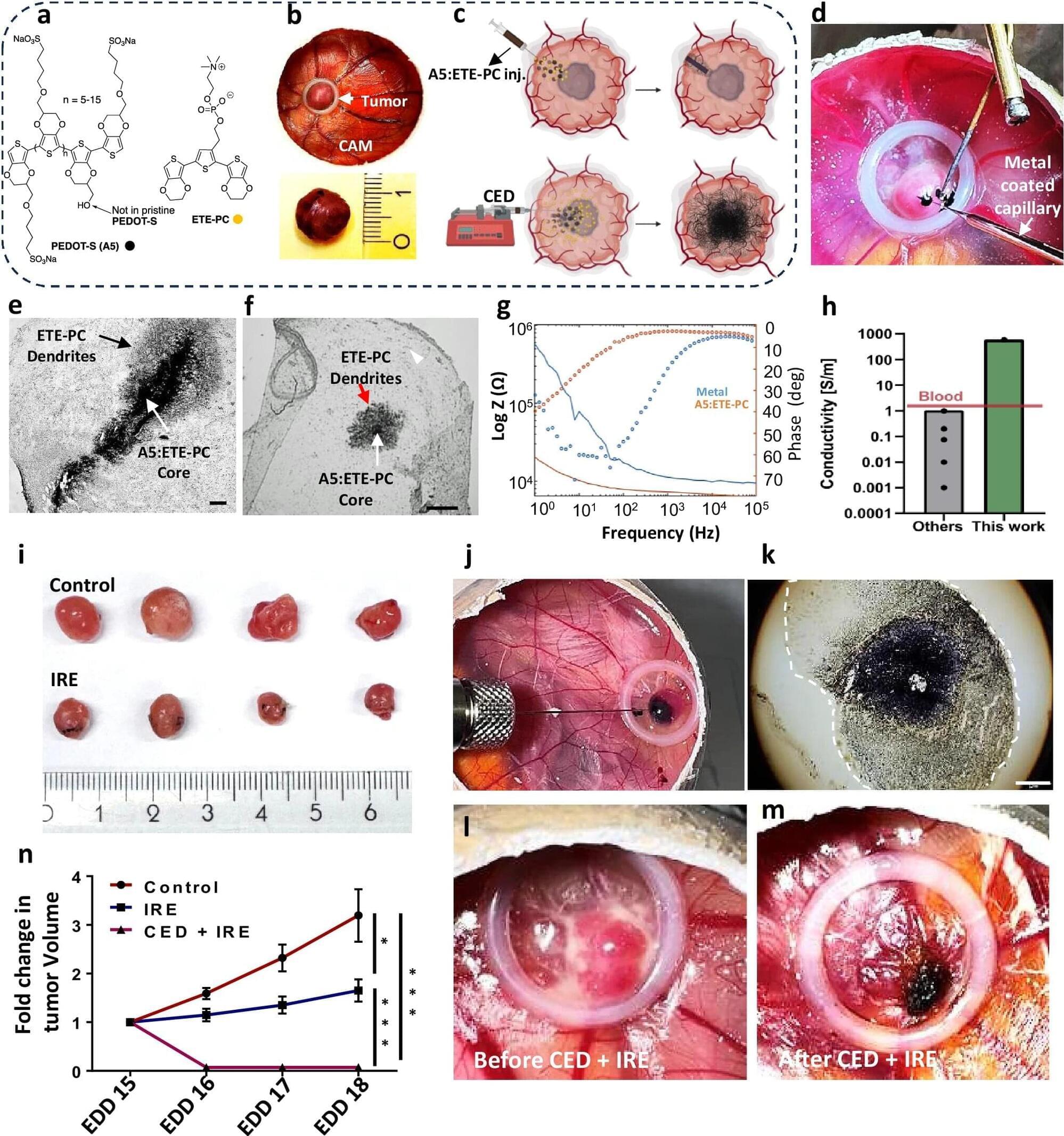
Electrotherapy using injectable nanoparticles delivered directly into the tumor could pave the way for new treatment options for glioblastoma, according to a new study from Lund University in Sweden.
Glioblastoma is the most common and most aggressive form of brain tumor among adults. Even with intensive treatment, the average survival period is 15 months. The tumor has a high genetic variation with multiple mutations, which often makes it resistant to radiation therapy, chemotherapy and many targeted drugs. The prognosis for glioblastoma has not improved over the past few decades despite extensive research.
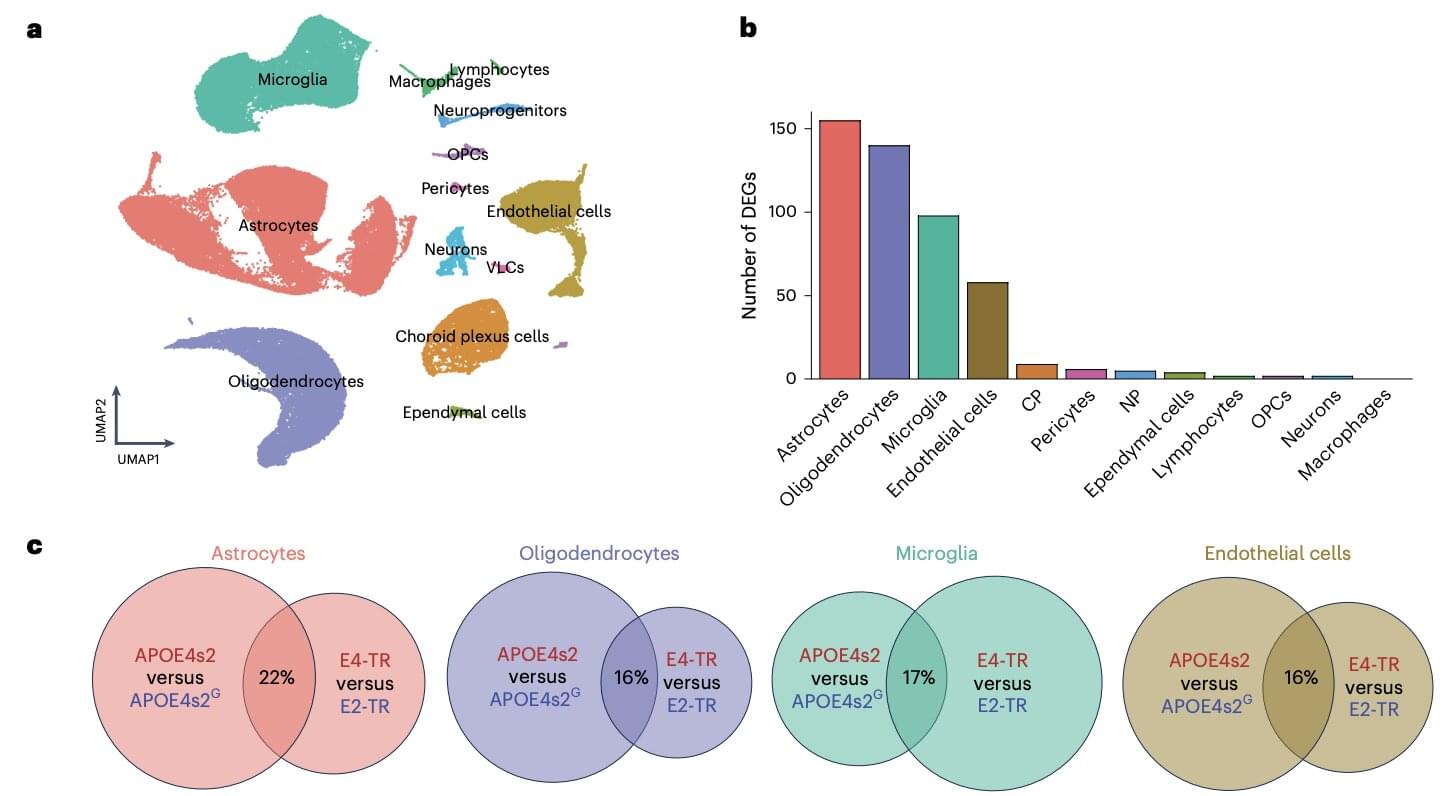
Alzheimer’s disease (AD) is a neurodegenerative disorder characterized by the progressive degradation of brain cells, as well as an associated decline in memory and other mental functions. Earlier research found that different forms (i.e., alleles) of a gene known as apolipoprotein E (APOE) are associated with an increased or decreased risk of developing AD.
The APOE gene can be mutated into different variants (i.e., alleles), including APOE2, APOE3 and APOE4. Past studies have linked the presence of two APOE4 alleles to a higher risk of developing AD, while two APOE2 alleles were linked to a significantly lower risk of AD.
Researchers at the University of Kentucky and other institutes genetically engineered a type of mouse that carries a genetic “switch” that can be activated with a drug and that converts the harmful APOE4 allele into the protective APOE2 allele.

Leukemia starts when mutations in blood-forming cells disrupt the balance between growth and differentiation. Patients with entirely different genetic changes show strikingly similar patterns of gene activity and can respond to the same drugs. What invisible thread could make so many mutations behave the same way?
The authors looked into high-resolution microscope and saw something no one expected: leukemia cell nuclei shimmered with a dozen bright dots – tiny beacons missing from healthy cells.
Those dots weren’t random. They contained large amounts of mutant leukemia proteins and drew in many normal cell proteins to coordinate activation of the leukemia program. The dots were new nuclear compartments formed by phase separation, the same physical principle that describes why oil droplets form in water. The team named this new compartment, “coordinating bodies,” or C-bodies.
Inside the nucleus, these C-bodies act like miniature control rooms, pulling together the molecules that keep leukemia genes switched on. Like drops of oil collecting on the surface of soup, they appear when the cell’s molecular ingredients reach just the right balance.
Even more surprising, cells carrying entirely different leukemia mutations formed droplets with the same behavior. Although their chemistry differs, the resulting nuclear condensates perform the same function, using the same physical playbook.
A new quantitative assay confirmed it. These droplets are biophysically indistinguishable – like soups made from different ingredients that still simmer into the same consistency. No matter which mutation started the process, each leukemia formed the same kind of C-body.
The team confirmed the finding across human cell lines, mouse models and patient samples. When they tweaked the proteins so they could no longer form these droplets – or dissolved them with drugs, the leukemia cells stopped dividing and began to mature into healthy blood cells.
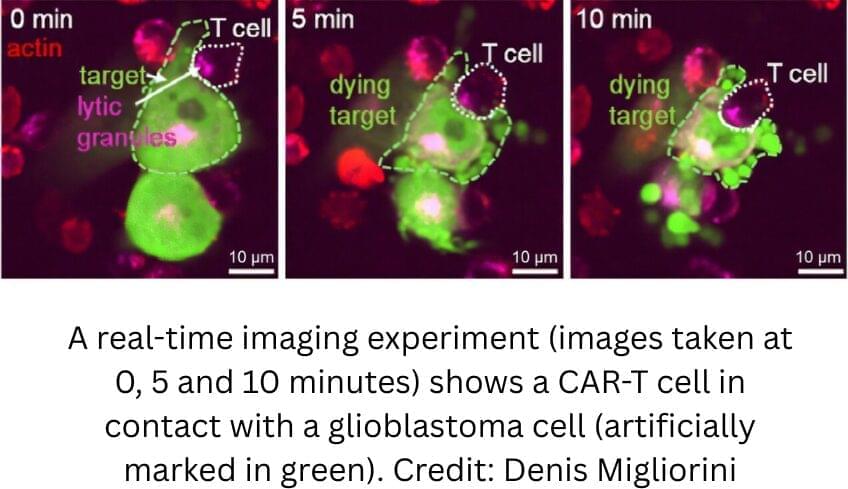
With a five-year survival rate of less than 5%, glioblastoma is one of the most aggressive types of brain cancer. Until now, all available treatments, including immunotherapy—which involves strengthening the immune system to fight cancer—have proved disappointing. CAR-T cells are genetically modified immune cells manufactured in the laboratory and designed to identify and destroy cancer cells.
By targeting a protein present in the tumor environment, a team from the University of Geneva (UNIGE) and the Geneva University Hospital (HUG) has developed CAR-T cells capable of destroying glioblastoma cells. Their efficacy in an animal model of the disease paves the way for clinical trials in humans.
The results are published in the Journal for ImmunoTherapy of Cancer.

Protein homeostasis, or proteostasis, is essential for cellular proteins to function properly. The buildup of abnormal proteins (such as damaged, misfolded, or aggregated proteins) is associated with many diseases, including cancer. Therefore, maintaining proteostasis is critical for cellular health. Currently, genetic methods for modulating proteostasis, such as RNA interference and CRISPR knockout, lack spatial and temporal precision. They are also not suitable for depleting already-synthesized proteins. Similarly, molecular tools like PROTACs and molecular glue face challenges in drug design and discovery. To directly control targeted protein degradation within cells, we introduce an intrabody-based optogenetic toolbox named Flash-Away integrates the light-responsive ubiquitination activity of the RING domain of TRIM21 for protein degradation, coupled with specific intrabodies for precise targeting. Upon exposure to blue light, Flash-Away enables rapid and targeted degradation of selected proteins. This versatility is demonstrated through successful application to diverse protein targets, including actin, MLKL, and ALFA-tag fused proteins. This innovative light-inducible protein degradation system offers a powerful approach to investigate the functions of specific proteins within physiological contexts. Moreover, Flash-Away presents potential opportunities for clinical translational research and precise medical interventions, advancing the prospects of precision medicine.
The human body depends on accurate genetic instructions to keep its cells working properly. Cancer begins to form when these instructions become disrupted. As genetic mistakes build up over time, cells can lose their normal limits on growth and start multiplying in an uncontrolled way. Chromosomal abnormalities – numerical and structural defects in chromosomes – are often one of the earliest changes that push healthy cells toward becoming cancerous.
Researchers in the Korbel Group at EMBL Heidelberg have created a new AI-based tool that gives scientists a way to closely examine how these chromosomal abnormalities develop. The insights gained from this approach may eventually clarify some of the earliest steps that lead to cancer.
“Chromosomal abnormalities are a main driver for particularly aggressive cancers, and they’re highly linked to patient death, metastasis, recurrence, chemotherapy resistance, and fast tumor onset,” said Jan Korbel, senior scientist at EMBL and senior author of the new paper, published in the journal Nature. “We wanted to understand what determines the likelihood that cells undergo such chromosomal alterations, and what’s the rate at which such abnormalities arise when a still normal cell divides.”

The corpus callosum is critical for nearly everything the brain does, from coordinating the movement of our limbs in sync to integrating sights and sounds, to higher-order thinking and decision-making. Abnormalities in its shape and size have long been linked to disorders such as ADHD, bipolar disorder, and Parkinson’s disease. Until now, the genetic underpinnings of this vital structure remained largely unknown.
In the new study, published in Nature Communications, the team analyzed brain scans and genetic data from over 50,000 people, ranging from childhood to late adulthood, with the help of a new tool the team created that leverages artificial intelligence.
“We developed an AI tool that finds the corpus callosum in different types of brain MRI scans and automatically takes its measurements,” said co-first author of the study. Using this tool, the researchers identified dozens of genetic regions that influence the size and thickness of the corpus callosum and its subregions.
The study revealed that different sets of genes govern the area versus the thickness of the corpus callosum—two features that change across the lifespan and play distinct roles in brain function. Several of the implicated genes are active during prenatal brain development, particularly in processes like cell growth, programmed cell death, and the wiring of nerve fibers across hemispheres.
Notably, the study found genetic overlap between the corpus callosum and the cerebral cortex—the outer layer of the brain responsible for memory, attention, and language—as well as with conditions such as ADHD and bipolar disorder.
For the first time, a research team has mapped the genetic architecture of a crucial part of the human brain known as the corpus callosum—the thick band of nerve fibers that connects the brain’s left and right hemispheres. The findings open new pathways for discoveries about mental illness, neurological disorders and other diseases related to defects in this part of the brain.